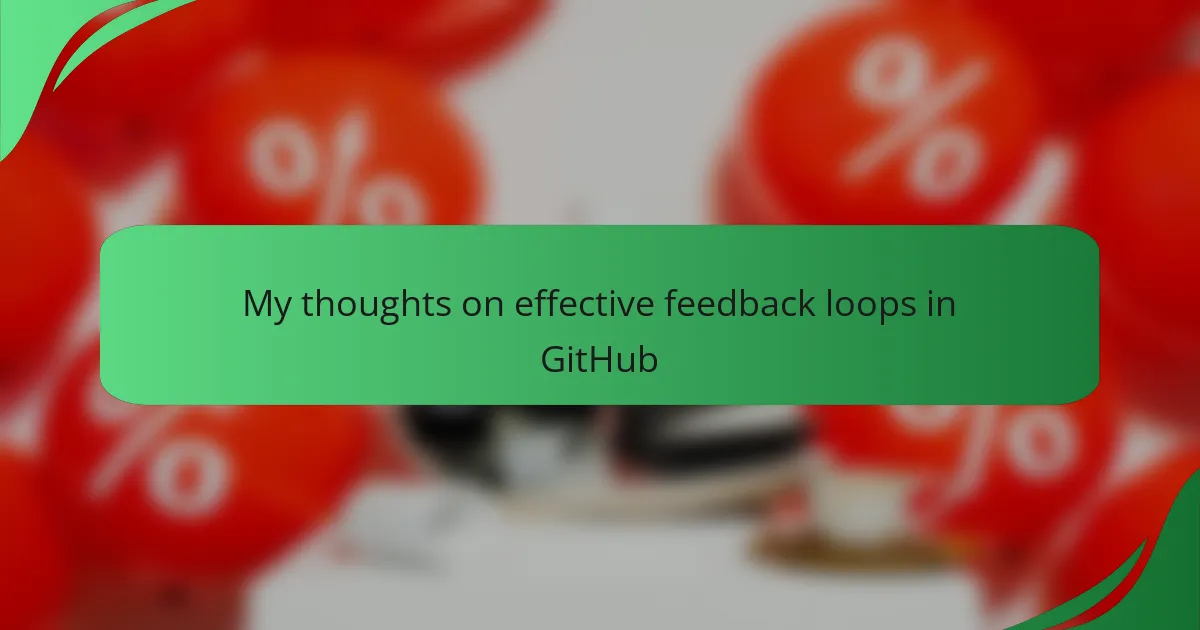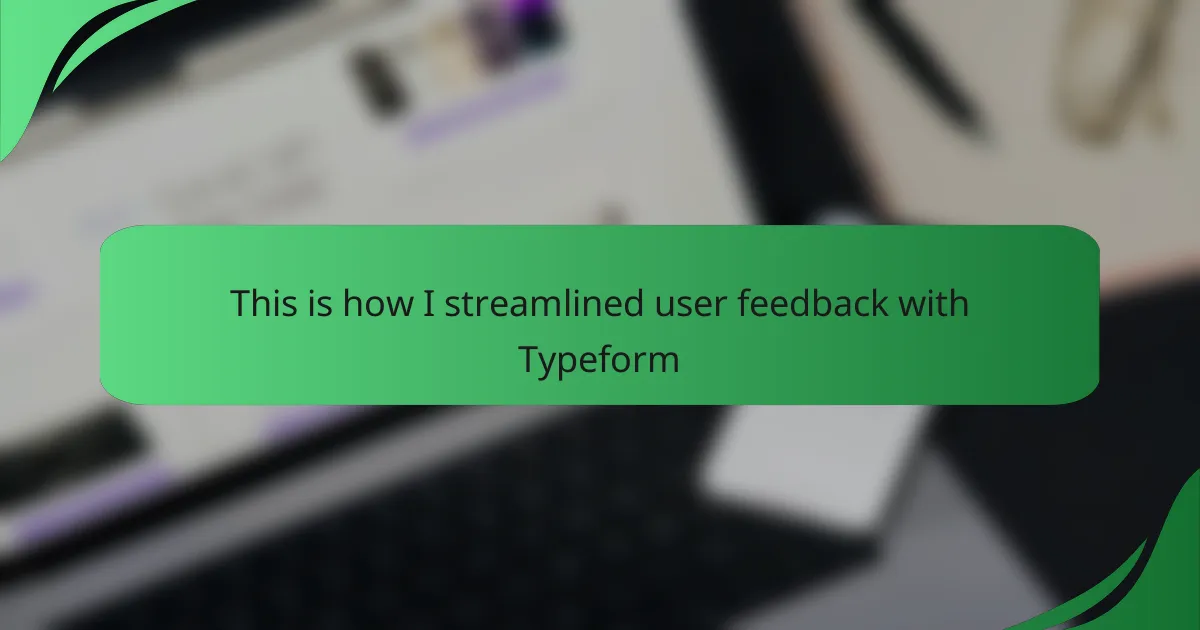Key takeaways
- Feedback loops in design and GitHub are vital for enhancing product quality and fostering collaboration.
- Effective feedback should be clear, timely, constructive, and delivered with a supportive tone to encourage a positive team dynamic.
- Implementing regular feedback sessions and using structured templates can significantly improve team communication and project outcomes.
- Engaging in open discussions and celebrating improvements cultivates a strong sense of community among contributors.
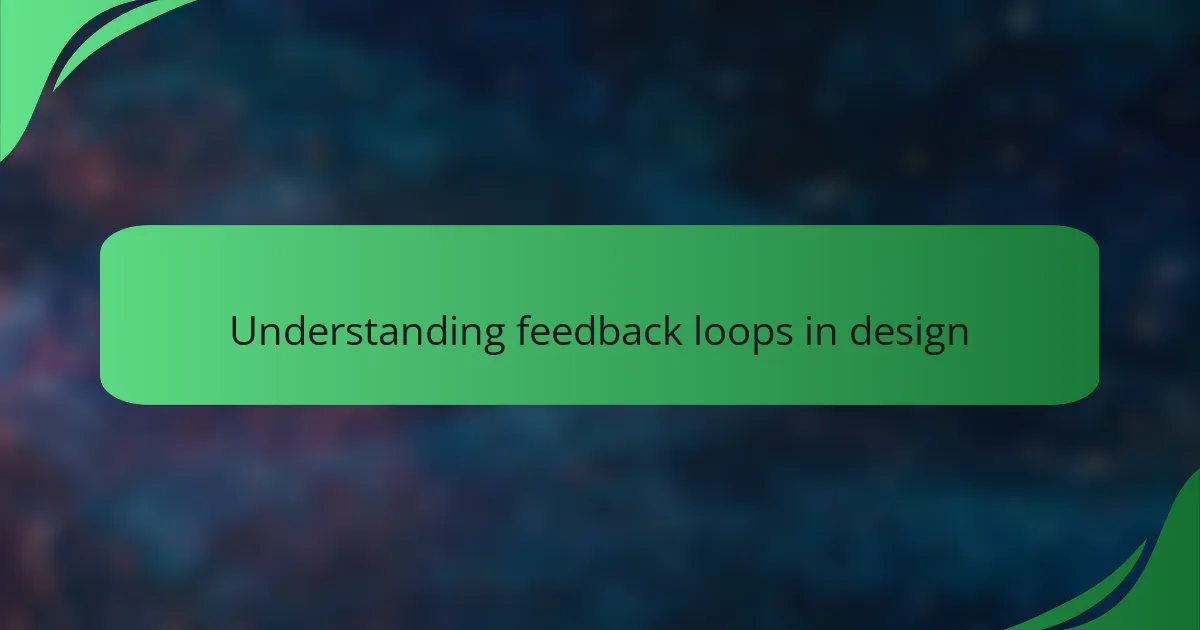
Understanding feedback loops in design
Feedback loops in design are essential for refining ideas and improving user interfaces. I’ve often found that receiving input from users can illuminate aspects of a design I hadn’t considered, enriching the entire process. Have you ever experienced a moment where feedback changed how you viewed your work?
When I think about feedback loops, I remember a project where user testing revealed unexpected pain points in the interface. The insights we gained were invaluable, turning a good design into a great one. It’s a reminder that design isn’t finished; it evolves with every piece of feedback we receive.
Incorporating feedback isn’t just about making adjustments; it’s about fostering a culture of collaboration and continuous improvement. Each loop creates a partnership between the designer and the user, allowing for deeper insights and a more tailored experience. This symbiotic relationship not only enhances the product but also enriches our understanding of the user’s needs and behaviors.
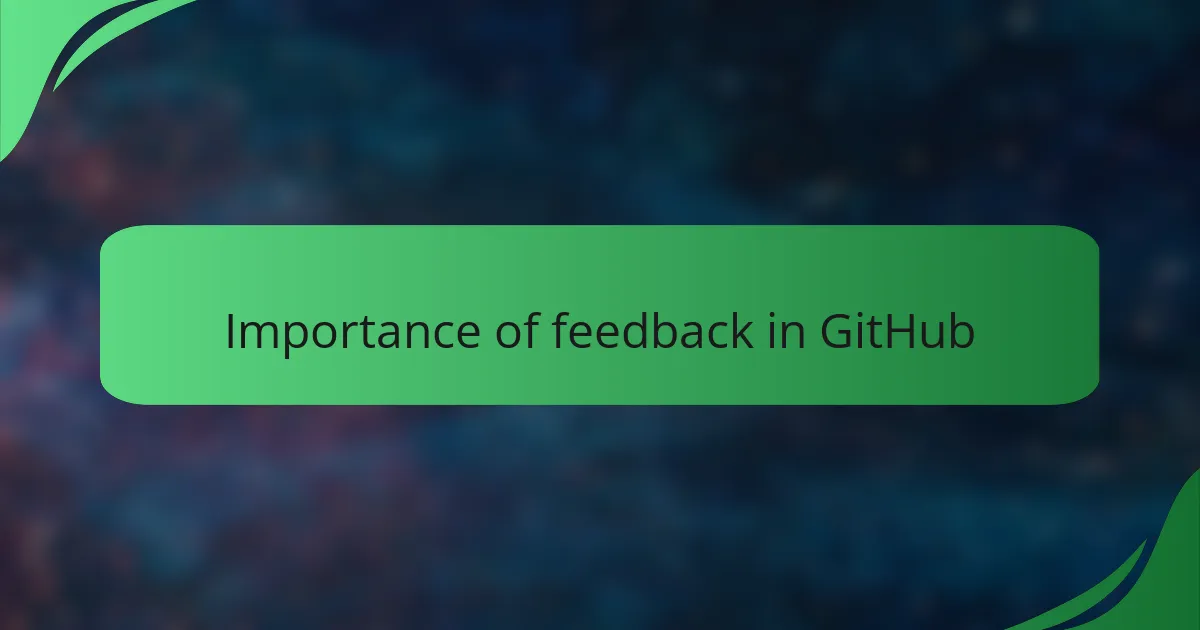
Importance of feedback in GitHub
Feedback in GitHub is crucial because it fosters collaboration and continuous improvement. I’ve personally experienced the impact of robust feedback loops when working on open-source projects. Each piece of feedback I received, whether positive or critical, helped me refine my contributions and grow as a developer.
When teams engage effectively with feedback on GitHub, they create an environment ripe for innovation. It transforms every contribution into a learning opportunity. This dynamic not only enhances project quality but also builds stronger relationships among collaborators. I remember a time when a simple comment on my code led to a thoughtful discussion, resulting in a better solution than I initially proposed.
- Facilitates clearer communication among team members.
- Encourages ongoing learning and skill development.
- Enhances code quality through collective scrutiny.
- Builds a sense of community and shared ownership in projects.
- Drives overall project progress and timely completion.
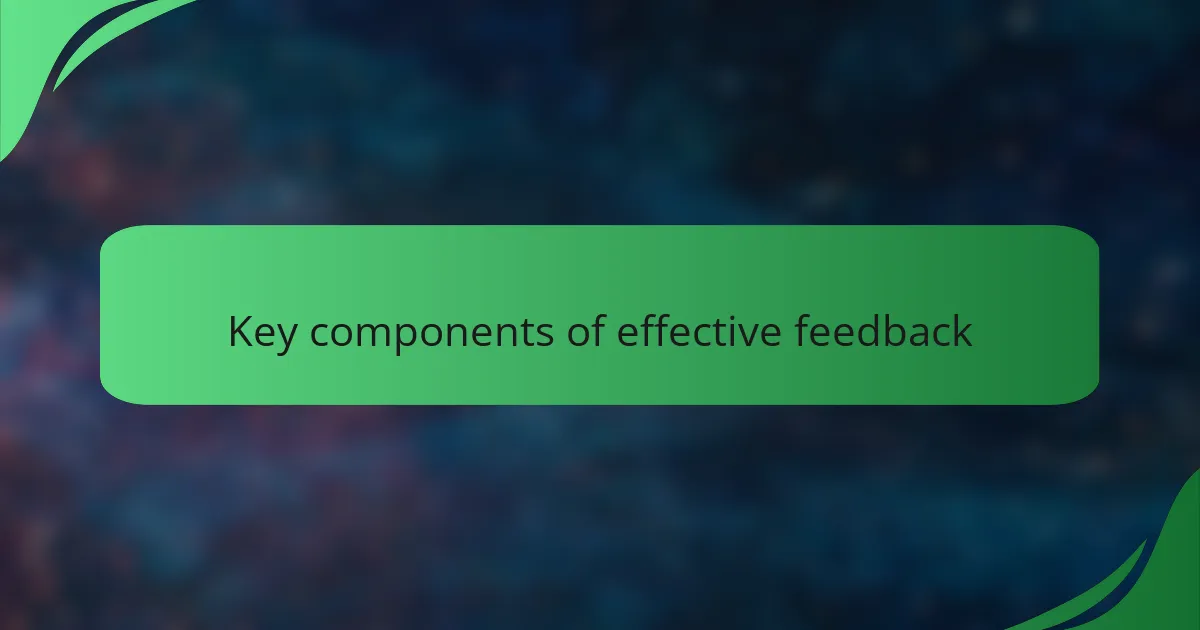
Key components of effective feedback
When I think about effective feedback in GitHub, several key components come to mind. Clarity is paramount; feedback should be specific and easy to understand. I remember receiving vague comments on my code, which left me feeling frustrated and unclear about how to improve. Timeliness is also crucial; receiving feedback shortly after a submission allows for rapid iteration, making the development process smoother and more efficient.
Another vital component is the constructiveness of the feedback. I’ve had experiences where feedback felt personal rather than focused on the work. This not only dampened my motivation but also made it challenging to learn and adapt. Finally, a supportive tone can make all the difference. I’ve noticed that when feedback is delivered in a friendly manner, it encourages collaboration and fosters a healthier team dynamic.
| Key Components | Description |
|---|---|
| Clarity | Specific and understandable feedback ensures actionable insights. |
| Timeliness | Immediate feedback facilitates quick improvements and iterations. |
| Constructiveness | Focus on the work, not the individual, to promote learning. |
| Supportive Tone | A friendly tone encourages collaboration and makes feedback more impactful. |
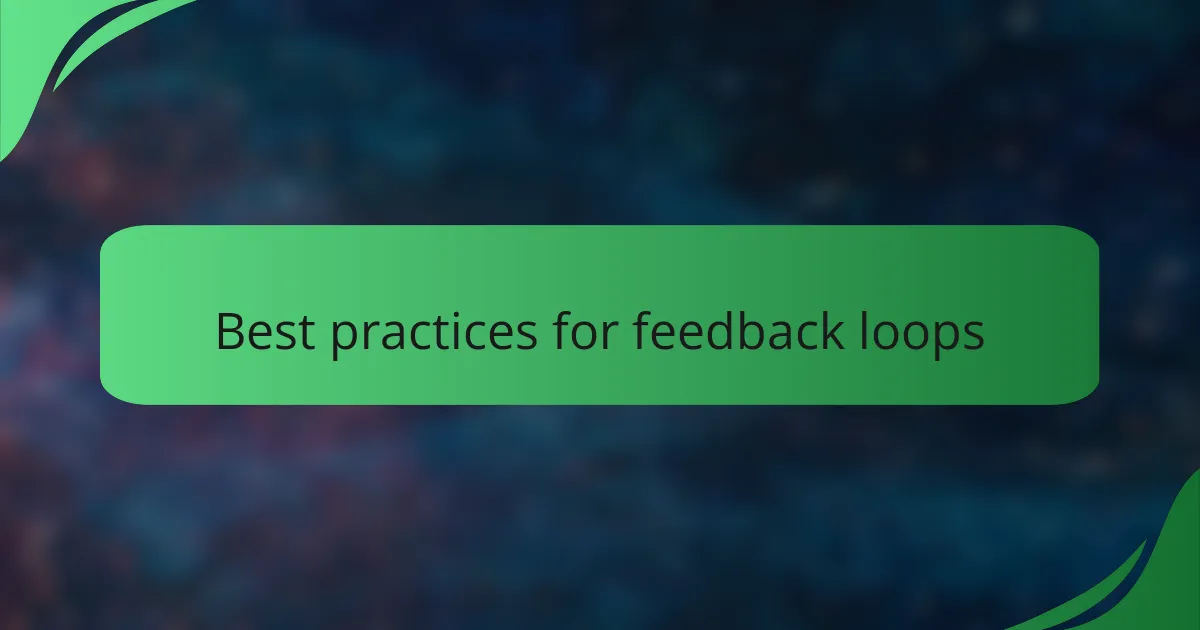
Best practices for feedback loops
When it comes to effective feedback loops in GitHub, clarity is key. I’ve often found that being concise and direct in pull request comments can save a lot of time and misunderstandings. There’s something immensely satisfying about a well-structured review process; it not only enhances the code quality but also strengthens team collaboration.
Creating a culture of continuous learning within your team fosters an environment where constructive feedback is welcomed. I remember a project where we implemented regular feedback sessions, and it truly transformed our workflow. The support and encouragement we exchanged made us not just better developers but also better colleagues.
Best Practices for Feedback Loops:
– Encourage open and honest communication to build trust among team members.
– Use specific examples in feedback to guide improvements effectively.
– Schedule regular feedback sessions to keep the conversation flowing.
– Leverage GitHub comments for ongoing discussions, rather than saving them all for major reviews.
– Celebrate successes and improvements along the way to keep morale high.
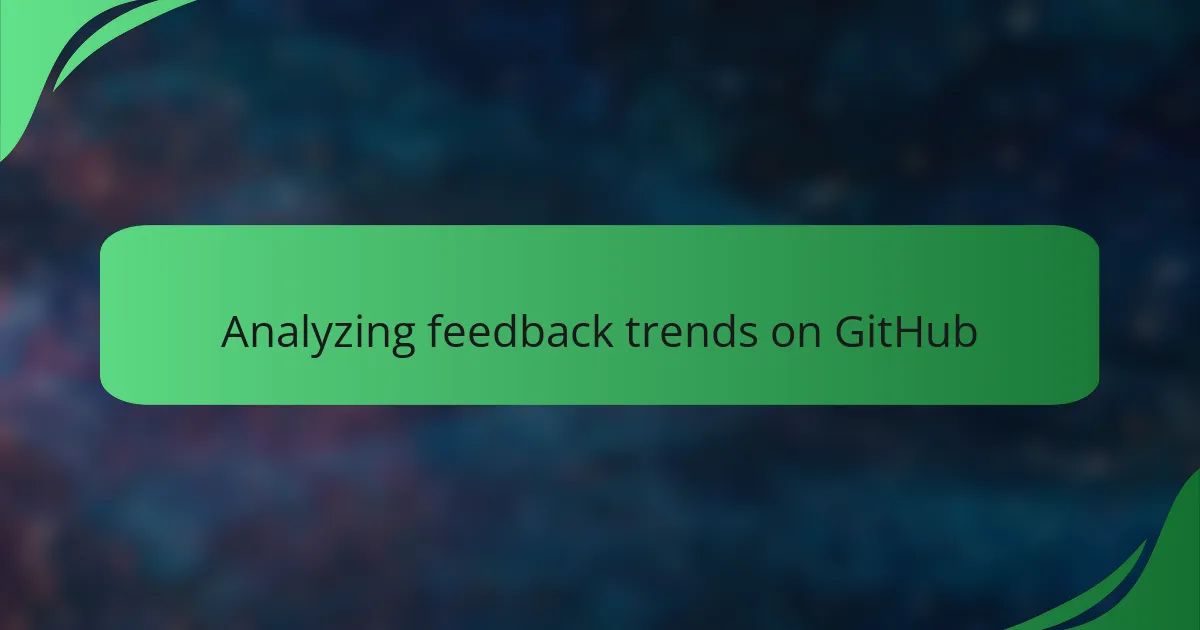
Analyzing feedback trends on GitHub
When analyzing feedback trends on GitHub, I often notice patterns in the type and frequency of comments left by contributors. For example, I’ve seen how rapid responses to pull requests not only foster collaboration but also lead to higher quality code. It’s fascinating to observe that projects with regular and structured feedback loops tend to have more engaged contributors, which enhances the overall project health.
Another trend I’ve identified is the importance of incorporating feedback into the project’s evolution. I remember participating in a project where the maintainer actively sought user input through GitHub discussions. It not only made contributors feel valued but also led to innovative solutions that might not have emerged otherwise. This dynamic creates a sense of community that can be incredibly rewarding for everyone involved.
Here’s a comparison of feedback types and their impacts on project development:
| Feedback Type | Impact on Project |
|---|---|
| Timely Code Reviews | Enhances code quality and team confidence |
| In-depth Discussions | Fosters innovation and collaborative solutions |
| Constructive Criticism | Promotes skill development and learning |
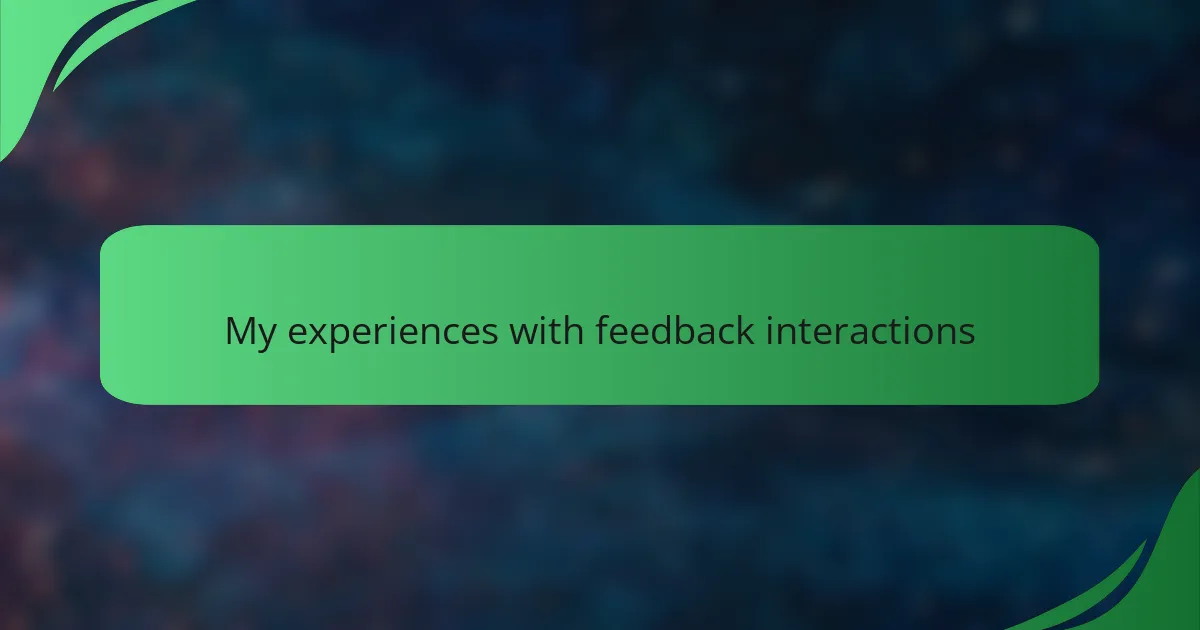
My experiences with feedback interactions
In my experience, effective feedback interactions within GitHub can transform a project’s trajectory. I remember a time when a colleague implemented a code review process that allowed for timely feedback. Instead of waiting for a formal meeting, we used comments directly within pull requests, enabling a conversation that fostered collaboration and quick resolution of issues.
One aspect I’ve found particularly beneficial is the use of structured templates for feedback. They guide discussions, ensuring all key points are addressed. Over time, I’ve noticed how this approach not only improves the quality of our code but also strengthens team bonds. Here’s what I’ve learned about fostering effective feedback interactions:
- Encourage real-time feedback through comments on pull requests.
- Use templates to structure feedback and ensure comprehensive discussions.
- Create a culture where constructive criticism is welcomed and valued.
- Follow up on feedback to show appreciation and promote continuous improvement.
- Celebrate small victories to maintain morale during feedback sessions.
